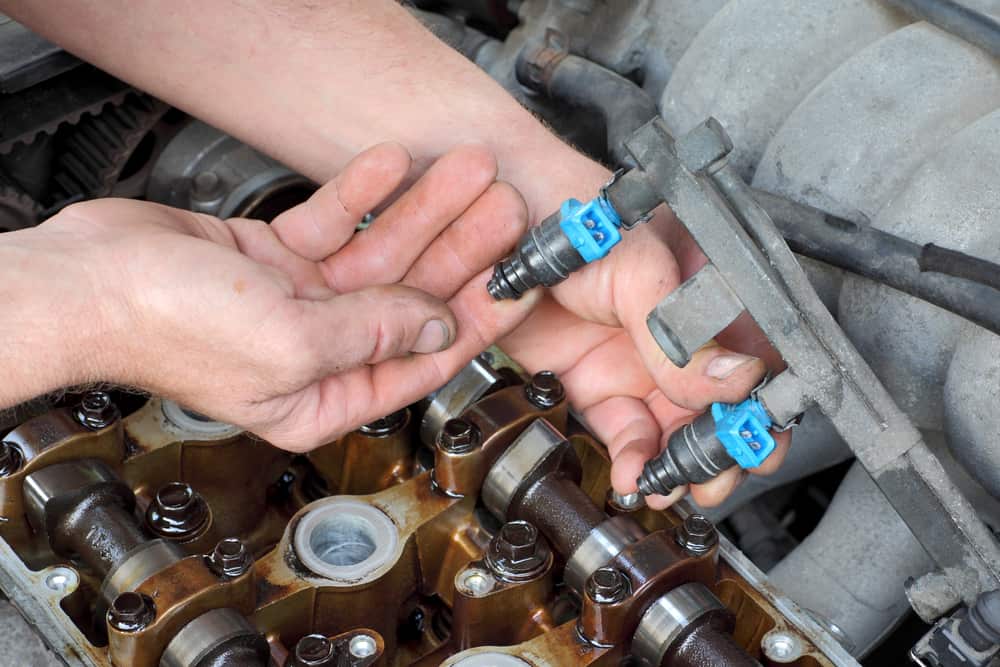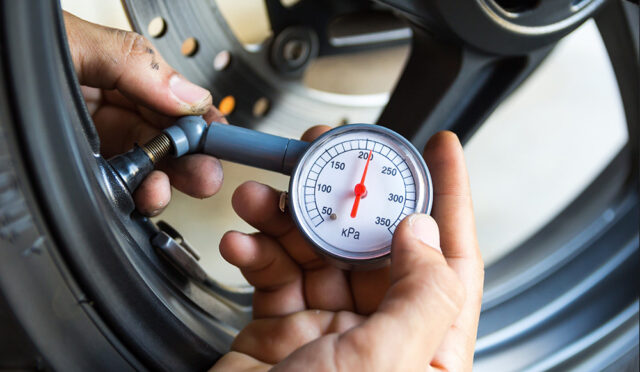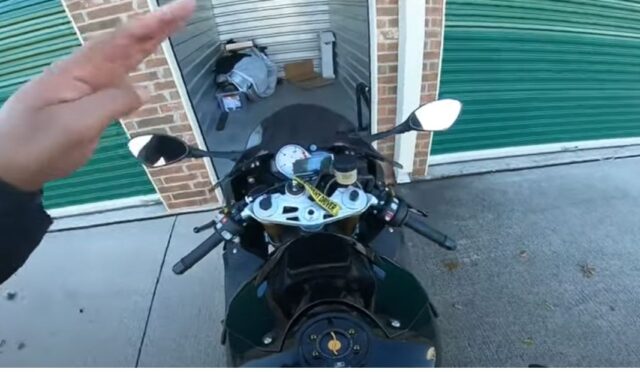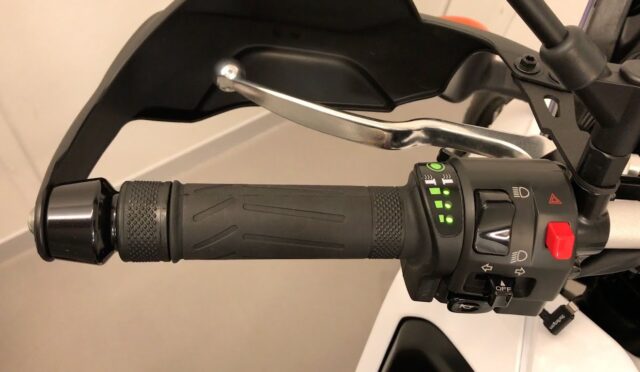Replacing a fuel injector is a common repair for many vehicles. But can you just replace one fuel injector? The short answer is yes, you can. However, it is important to consider a few factors before deciding.
Fuel injectors can wear out over time. This wear can lead to poor performance or engine misfires. If one injector fails, you might only need to replace that single unit. However, many experts recommend replacing all injectors at the same time. This ensures balanced performance and efficiency across all cylinders.
The cost of replacing one fuel injector varies. On average, a single fuel injector can cost between $100 and $300, depending on the vehicle type and injector brand. Labor costs can add another $50 to $150 to the total bill. If you choose to replace all injectors, the cost can range from $400 to $1,200.
When considering replacement, check the injector’s condition. Signs of a failing injector include rough idling, decreased fuel efficiency, and an illuminated check engine light. If these issues affect multiple injectors, a full replacement may be more beneficial.
Replacing just one injector might save money initially. However, if other injectors are old or worn, they could fail soon after. This could lead to more repairs and higher costs in the long run. It is wise to evaluate the condition of all injectors when one shows signs of failure.
Installation of a new injector is crucial. Follow these steps: disconnect the battery, relieve the fuel pressure, and carefully remove the old injector. Then, install the new injector and reconnect everything. Proper installation ensures optimal performance and prevents future issues.
In conclusion, while you can replace just one fuel injector, it may be more prudent to replace all of them. This approach can save you time and money in future repairs. Always consider the overall condition of your fuel system before making a decision.
Understanding The Importance Of Replacing A Single Fuel Injector For Optimal Engine Performance
Fuel injectors play a crucial role in your vehicle’s engine performance. They deliver the right amount of fuel to the engine for efficient combustion. When one fuel injector fails, it can affect the entire system. Many wonder, Can I replace just one fuel injector? The answer is yes, but several factors must be considered.
Replacing a single fuel injector can restore engine efficiency. However, understanding why this is important is vital. A faulty injector can lead to poor fuel atomization, causing misfires and reduced power. This can also result in lower fuel economy and increased emissions.
Here are some signs that indicate a fuel injector problem:
- Engine misfires or rough idling
- Poor acceleration
- Increased fuel consumption
- Check engine light illuminated
When replacing just one injector, consider the following:
- Age of existing injectors: If other injectors are old, they may fail soon.
- Quality of parts: Use OEM or high-quality aftermarket parts for reliability.
- Labor costs: Hiring a mechanic can add to the overall cost.
Here is a simple comparison of costs:
| Item | Cost Range |
|---|---|
| Single Fuel Injector | $50 – $150 |
| Labor (1-2 hours) | $100 – $200 |
| Total Estimated Cost | $150 – $350 |
Replacing a single injector may seem like an easy fix, but it’s essential to assess the overall health of your fuel system. Ignoring potential issues with other injectors can lead to more significant problems down the line. This can result in costly repairs and decreased vehicle performance.
In conclusion, while it is possible to replace just one fuel injector, it is crucial to evaluate the condition of others. A balanced approach will ensure optimal engine performance and longevity.
Signs You Can Replace Just One Fuel Injector Without Affecting Overall Fuel System Integrity
When it comes to fuel injectors, many vehicle owners wonder if they can replace just one. The good news is that in some cases, you can. However, it’s important to know the signs that indicate a single fuel injector can be replaced without compromising the entire fuel system.
Fuel injectors play a crucial role in your engine’s performance. They deliver the right amount of fuel to the combustion chamber. If one injector fails, it does not always mean you have to replace them all. Here are some signs that you can replace just one fuel injector:
- Engine Misfire: If you notice that your engine misfires only at certain RPMs, it may point to a single faulty injector.
- Poor Fuel Economy: A decrease in mileage can indicate an issue with one injector, especially if the others are functioning properly.
- Fuel Odor: If you smell fuel more than normal, check the injectors. A leak from one can be the culprit.
- Check Engine Light: A specific trouble code related to one injector can confirm it needs replacement.
- Rough Idling: If your engine shakes or runs rough at idle, it may suggest an individual injector is failing.
Replacing a single fuel injector can be a cost-effective solution. The average cost for replacing an injector ranges from $150 to $600, depending on the make and model of your vehicle. Labor costs can add another $100 to $200. Therefore, replacing one injector is often less expensive than doing a full set.
It’s important to consider the overall condition of your fuel system. If you regularly maintain your vehicle and the other injectors are in good shape, you can confidently replace just one. However, if the system is aging or has other issues, it may be wise to replace all injectors simultaneously.
| Sign | Explanation |
|---|---|
| Engine Misfire | Indicates one injector may be faulty. |
| Poor Fuel Economy | Can signal a specific injector issue. |
| Fuel Odor | A leak from one injector can cause a strong smell. |
| Check Engine Light | Specific codes might indicate a single injector problem. |
| Rough Idling | May suggest a failing or clogged injector. |
In conclusion, it is possible to replace just one fuel injector without harming your fuel system’s integrity. Always ensure to evaluate the health of your entire fuel system before making a decision. Proper diagnostics will save you time and money in the long run.
Step-by-Step Guide: How To Replace One Fuel Injector Safely And Efficiently
Replacing a fuel injector can seem daunting, but with the right steps, it can be done safely and efficiently. Many wonder if they can replace just one fuel injector. The answer is yes. Here’s a step-by-step guide to help you through the process.
Before starting, ensure you have the following tools and materials:
- New fuel injector
- Socket set
- Wrench set
- Screwdrivers
- Fuel line disconnect tool
- Safety goggles
- Gloves
- Shop towels
Here’s a simple step-by-step guide:
- Preparation: Make sure your motorcycle or vehicle is off. Engage the parking brake and place wheel chocks to prevent movement.
- Relieve Fuel Pressure: Locate the fuel pump fuse and remove it. Start the engine and let it run until it stalls. This releases fuel pressure.
- Disconnect Battery: Disconnect the negative terminal of the battery to avoid any electrical issues.
- Access the Injector: Remove any necessary components to reach the fuel injector. This may include the air intake or fuel rail cover.
- Disconnect Fuel Lines: Use the fuel line disconnect tool to carefully detach the fuel lines from the injector.
- Remove Old Injector: Unscrew the injector from its housing. Carefully pull it out, avoiding any damage to surrounding components.
- Install New Injector: Lubricate the O-rings on the new injector with clean oil. Insert the new injector into the housing, ensuring it fits snugly.
- Reconnect Fuel Lines: Reattach the fuel lines to the new injector. Ensure they are secure to prevent leaks.
- Reassemble Components: Replace any components you removed to access the injector. This may include the air intake or cover.
- Reconnect Battery: Reattach the negative terminal of the battery.
- Check Fuel Pressure: Reinstall the fuel pump fuse. Turn the ignition to the on position to prime the fuel system, then check for leaks around the new injector.
- Start Engine: Start the engine. Allow it to run for a few minutes and listen for any unusual noises or leaks.
Here’s a table with key points about the cost and features of fuel injectors:
| Feature | Details |
|---|---|
| Price Range | $50 – $200 per injector |
| Material | Plastic and metal |
| Compatibility | Specific to make and model |
| Installation Difficulty | Moderate |
| Average Lifespan | 50,000 – 100,000 miles |
Properly replacing one fuel injector can restore performance and efficiency to your motorcycle or vehicle. Following this guide ensures a safe and effective replacement process.
Yes, you can replace a single fuel injector, but it’s often recommended to replace all of them for balanced performance and to prevent future issues.
Replacing one injector can improve performance if the old one was faulty, but mismatched injectors may lead to uneven fuel delivery and engine inefficiency.
Signs of a failing injector include rough idling, poor fuel economy, or engine misfires. Diagnostics can help confirm if an injector is the issue.
The cost of replacing one injector can vary, but it typically includes the part itself and labor, which may add up compared to replacing all injectors at once.
If you have the right tools and mechanical knowledge, you can replace an injector yourself; however, it’s crucial to follow the manufacturer’s guidelines for safety and proper installation.
If issues continue after replacing one injector, you should check for other problems such as a clogged fuel filter or issues with the fuel pump or other injectors.
Fuel injectors typically last between 50,000 to 100,000 miles, but regular maintenance and cleaning can extend their lifespan and performance.
Yes, low-quality fuel can lead to deposits forming in the injectors, potentially causing clogs or performance issues, making it essential to use good fuel for optimal injector health.
Common symptoms of a bad injector include engine misfires, reduced acceleration, increased emissions, and poor fuel efficiency.
Replacing all injectors at once can provide more consistent performance and help avoid future problems, making it a worthwhile investment for long-term reliability.







